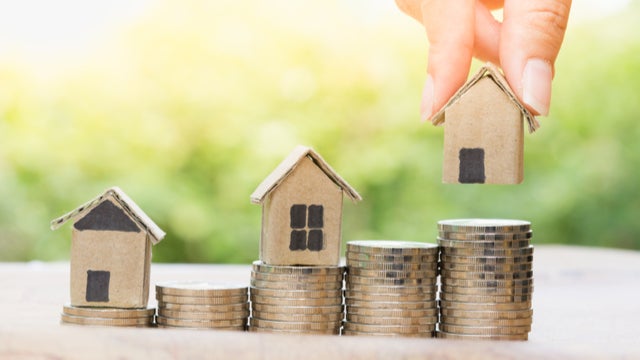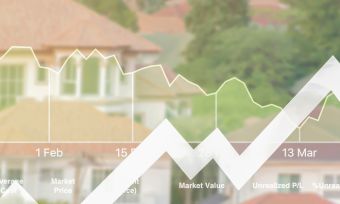There’s no shortage of data about investing in property online. From median prices and rental yields, to auction clearance rates and days on market, almost everything is at our fingertips. And all this information can help you with your decisions if you are investing in property.
Property investment experts have always used data to help them identify investment-grade properties in locations primed for superior capital growth. These days, though, the abundance of data online makes it seem easy for anyone to do the same.
Be careful, though, as statistics can tell you anything you want. Especially, if you have underlying biases to purchase a particular type of dwelling or in a specific location.
It’s key to dig deeper and consider a number of different metrics before investing in property in any location. Successful property investing comes down to a combination of science (data) and art (having the perspective to interpret the data trends correctly).
So what numbers should you look at and what do they mean? Here are five key indicators to consider when investing in property:
1. Vacancy rate
The vacancy rate shows the proportion of rental properties that are vacant. And it is usually expressed as a percentage. In very simple terms, if there are 100 properties for rent in a particular suburb but two are untenanted, that’s a vacancy rate of 2%.
However, in reality, the calculations are a little more complex than that. For example, some organisations that research vacancy rates only include listings that have been advertised for three weeks or more.
So what does this information tell you? A higher vacancy rate generally indicates lower demand for rental properties in a particular area. Whereas a low vacancy rate suggests there is more competition for properties.
If you’re looking for an investment property, an area with low vacancy rates is more appealing. Not only are you more likely to be able to rent out the property, but you could potentially attract more tenants. This gives you a larger selection of people to choose from to find a suitable tenant. Also, you may be able to charge higher rent in a location with low vacancy rates.
In terms of what is a good vacancy rate, most experts say that anything under 2% is considered a landlord’s market. About 3% generally means that the market is pretty balanced, and anything more than 4% is considered a tenant’s market. Of course, vacancy rates are only one consideration.
As there is no central database of vacancy rates in NZ, you’ll have to do a little homework to discover the vacancy rates in the areas in which you’re considering investing. Talk to local property managers for an insight into in-demand locations; they’ll also be able to advise you on the types of properties that renters are looking for and typical rental yields.
2. Rental yield
The rental yield shows how much you will make from a property, and is expressed as a percentage. There is a gross rental yield and a net rental yield. To calculate the gross rental yield you work out the annual rent, divide it by the value of the property and multiply that number by 100 to get the percentage.
Gross rental yield
So let’s say you rent out a property for $600 a week ($600 x 52 = $31,200) and the property is worth $600,000. Your gross rental yield is 5.2% ($31,200 ÷ $600,000 x 100 = 5.2%).
However, gross rental yield doesn’t factor in your expenses. To do that you need to calculate the net rental yield. This involves subtracting your expenses from the income and then dividing that figure by the property value and multiplying by 100.
Net rental yield
So looking at the previous example, let’s assume your annual expenses come to $10,000. You subtract that from the income of $31,200 and that comes to $21,200. In this case, your net rental yield is 3.5%: ($31,200 – $10,000) ÷ $600,000 x 100 = 3.5%.
You can research the average rental yield in your chosen area to know what to aim for. It’s also worth noting that properties in regional areas tend to have a higher rental yield than in some metropolitan locations, because of their lower price point.
Rental yield can be a tricky indicator, though, especially if you don’t look deeper into the numbers. For example, if a property is earning $20,000 a year and is worth $400,000, the rental yield is 5%.
We assume that if the rental yield increases to 6%, it’s a good thing. But it’s only a good thing if the rent increases to $24,000, while the value stays at $400,000. It’s not so good if the rent stays at $20,000 and the property value drops to $333,333. In both cases, the rental yield is 6%.
The moral of the story? If you’re focusing on rental yield, look carefully at the numbers and ensure that your rental yield is increasing because the rent is increasing, not because the property’s value is decreasing.
3. Auction clearance rate
The auction clearance rate is the percentage of properties listed for auction that sold in a particular week or month. This is a number you hear or read about a lot in the media, as it can be viewed as an indicator of the health of the property market.
When auction clearance rates are low (generally about 60%), it typically means that demand is low and that property prices may be in decline. If the auction clearance rate is high (more than 75%), then it’s generally a sign that demand is higher and prices are fairly strong.
Looking at the clearance rate for just one weekend won’t give you a true picture. There may not have been a lot of properties up for auction, or perhaps a sporting event or holiday affected the numbers. It’s better to look at the trend – that is, are auction clearance rates increasing, decreasing or remaining steady over a longer period of time.

4. Days on market
Days on market (DOM) is the number of days a property spends advertised for sale before it sells. When looking at DOM absolute numbers are nowhere near as important as the trend. The trend of DOM is a key indicator of whether we’re in a buyer’s or seller’s market, as it serves as a marker of the relationship between supply and demand. If it’s taking longer for properties to sell, it’s usually a sign of softer market conditions and vice versa.
DOM is a good indicator of the activity in a particular area. If the DOM is decreasing, it indicates that there are more people wanting to buy than people wanting to sell. If the DOM is increasing, it could potentially mean there is a buying opportunity, as some vendors get very nervous when their property is taking too long to sell. This could be people who have to sell because of death, divorce or they need the money and will sell at almost any price.
5. Vendor discount
The vendor discount is the difference between the price at which a property was originally advertised for sale, and its final sale price. When there are fewer buyers looking for property than there are properties for sale, vendors usually need to discount their asking prices to secure a buyer.
Looking at the vendor discounting in a particular area can give you an idea of how much you may be able to negotiate on the price for a property. You can also look at discounting on an individual property to determine how motivated the owner may be to sell.
If the property has been on the market for three months and the asking price has not changed, then it’s likely that the owner is not that keen to sell. However, if the asking price is reduced early on in the marketing campaign, say after two to three weeks, it indicates that the owner is keen to sell and it may present an opportunity to buy a property below market value.
If you’re in the market for a new home, and if you need a mortgage, Canstar can help. Not only can you compare mortgage rates for free on our site, we publish expert research into the best lenders in the market. To read why Kiwibank took out our award for Bank of the Year | Home Loans 2020 click this link. Or to compare current mortgage rates, click on the big button below.
Compare home loan rates for free with Canstar!
Enjoy reading this article?
You can like us on Facebook and get social, or sign up to receive more news like this straight to your inbox.
By subscribing you agree to the Canstar Privacy Policy




Share this article